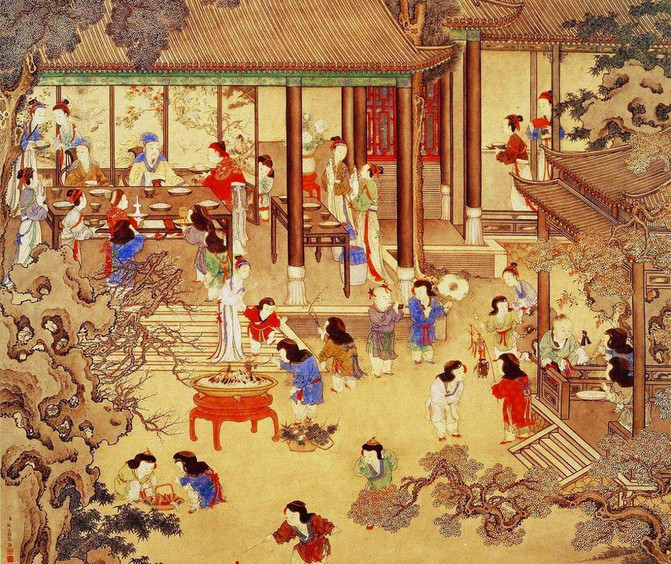How did Tang people in history celebrate the New Year? Far more colorful than you think
First of all, the long history of the Spring Festival can be traced back to the sacrificial activities during the Yin and Shang Dynasties. During the Western Jin Dynasty, the folk custom of observing the New Year was established. Up to now, the Spring Festival has become the most solemn traditional festival in my country. In the process of inheritance of history, the Spring Festival embodies profound cultural connotations and historical heritage. If it is the most lively Spring Festival in all dynasties, it must be the prosperous Tang Dynasty. The stable social environment and prosperous economy during the prosperous Tang Dynasty became the basis for the strong festive atmosphere of the Spring Festival.

When the lights are on, Chang 'an City is brightly lit, and men, women and old will gather together on New Year's Eve to observe the New Year's Eve. During the Tang Dynasty, there was no such thing as "Spring Festival". Keeping the New Year on New Year's Eve was also called "enduring the New Year". Every household was welcoming the arrival of the new year. The first day of the New Year was called "Yuanri" or "Yuanzheng" in the Tang Dynasty. This day was also a very important day for the people of the Tang Dynasty. All civil and military officials and distant foreign guests would enter the palace to congratulate the emperor. A grand court meeting ceremony would be held in the palace. After the ceremony, the emperor would give a banquet to the ministers. The ministers would drink wine and compose poems at the banquet. The poems were gorgeous, expressing good wishes for the New Year. Such Zhengdan court meetings continued from the Han Dynasty to the Tang Dynasty, and became more formal and grand during the Tang Dynasty.

In addition to the court, there is also a trend of paying greetings and congratulating people on the first day of the New Year. At banquets among the people, drinking Tusu wine and Zanthoxylum bungeanum wine has become a Spring Festival custom. Tusu wine soaked in herbal medicine is very common in many poems of the Tang Dynasty."The sound of firecrackers leaves the year, and the spring breeze sends warmth into Tusu." During the New Year Festival, many poets wrote poems to express their surging and enthusiastic mood. People in the Tang Dynasty also liked to eat sweets during the New Year. For example, the "gum tooth cake" made from barley or wheat is very similar to today's maltose. During the Tang Dynasty, the sugarcane sugar making method was not popular. This kind of "gum tooth cake" in ordinary people's homes is also a relatively valuable delicacy.

During the New Year of the Tang Dynasty, there were many interesting and unwritten customs. For example, on New Year's Eve, Tang people would not dump garbage outside their homes, which means that family wealth would not be lost; worn shoes would be buried in the yard, which means that "the son of the seal (the son of a high official)" would be born in the family; a worn broom would be thrown into the fire in the yard and burned at midnight, indicating that the family granary would be good in the new year... During the Tang Dynasty, people would erect long poles in the yard on the morning of the first day of the New Year. A long flag made of paper or cloth floated on the top of the pole. The flag swayed with the wind to pray for longevity and health. This kind of "flag" was later spread to Japan and became the predecessor of the Japanese carp flag.

People's expression of New Year culture is different from generation to generation, but the only constant thing is the spiritual core that family members can be happily reunited. New Year is a condensation of Chinese culture and also has endless legends. Year after year, the Spring Festival continues to inherit classics and continues to develop with the progress of society, becoming more in line with the spiritual needs of modern people.
Previous Article:The thousand-year-old "fleshly Bodhisattva" is preserved in this temple scattered across the tip of the Qinling Mountains
